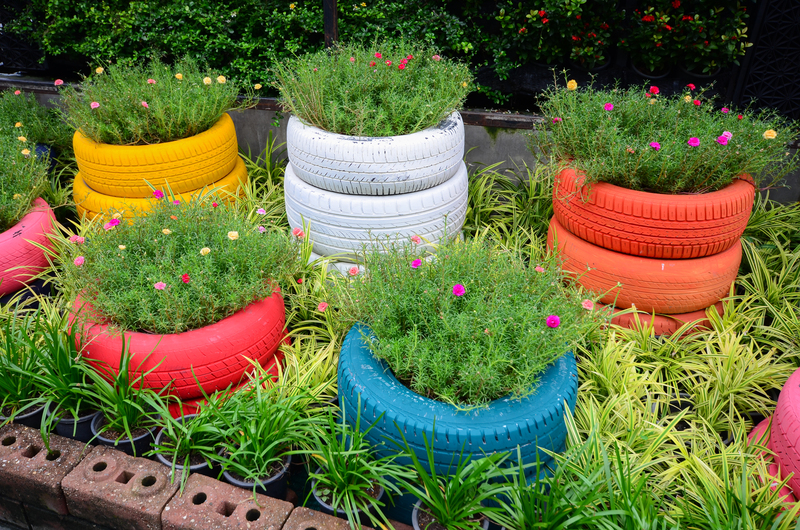Practical Recycling Tips for Home
Posted on 01/07/2025
Practical Recycling Tips for Home
Recycling is one of the most important actions individuals can take to protect the environment. By properly sorting and disposing of waste, you can reduce landfill use, conserve natural resources, and decrease pollution. However, many people find the recycling process confusing and daunting. If you're looking to make a meaningful impact, follow these practical recycling tips for home, which will help you recycle more efficiently and effectively.
1. Know What Can Be Recycled
Understanding what materials can be recycled is fundamental. Generally, most household items made of paper, glass, metal, and certain plastics are recyclable. Here's a brief rundown:
- Mixed Paper: Newspapers, magazines, cardboard, office paper, and junk mail.
- Glass: Jars and bottles.
- Metal: Aluminum, steel cans, and foil.
- Plastics: Typically, plastics labeled with numbers 1 and 2 (PET and HDPE) are widely accepted.
Always check your local recycling guidelines as they can vary by municipality. Items like plastic bags, certain types of plastic containers, and greasy pizza boxes may not be accepted curbside but can often be recycled through specialized programs.

2. Decontaminate Items
Before putting items in the recycling bin, ensure they are clean and free from food residue. Contaminated recyclables can spoil an entire batch, making it unusable. Here are some simple steps to decontaminate items:
- Rinse food containers and bottles: Empty any food or liquids and give them a quick rinse.
- Remove labels: While most facilities can handle labels, it is good practice to remove them if feasible.
- Flatten cardboard boxes: This makes them easier to transport and process.
3. Separate Recyclables
Organizing your recyclables at home can make the process smoother. Set up different bins for paper, glass, metal, and plastic. This pre-sorting makes it easier for recycling facilities to process your waste efficiently.
4. Use Reusable Containers
Instead of single-use plastic bags and containers, opt for reusable alternatives. Cloth bags, glass jars, and stainless steel bottles can significantly reduce the amount of waste you generate. Many places now encourage or mandate reusable shopping bags, which helps reduce the strain on recycling systems.
5. Compost Organic Waste
Composting is a fantastic way to reduce the amount of waste sent to landfills. Organic waste like fruit and vegetable scraps, coffee grounds, and eggshells can be composted to create nutrient-rich soil for your garden. If you don't have space for an outdoor compost pile, consider a countertop compost bin or a vermiculture setup using worms.
6. Recycle E-Waste Properly
Electronic waste (e-waste) like old phones, batteries, and computers contain hazardous materials and should not be thrown in with regular trash. Many electronics retailers offer take-back programs, and some municipalities have specific e-waste recycling events. Be sure to wipe any personal data from devices before recycling them.
7. Buy Recycled Products
Close the recycling loop by purchasing products made from recycled materials. Items like recycled paper, plastic lumber, and eco-friendly packaging support the recycling market and encourage further waste reduction. When shopping, look for labels indicating the product is made from a percentage of recycled content.
8. Educate Your Household
Recycling efforts should be a household activity. Educate everyone in your home about what can and cannot be recycled, and encourage participation. Kids can be particularly eager to help with sorting and can grow up with recycling as a natural habit.
9. Use Apps and Resources
There are numerous apps and online resources designed to help you recycle more efficiently. Apps like iRecycle, Recycle Coach, and local government websites often provide information on what can be recycled and where specific items can be taken.
10. Reduce and Reuse Before Recycling
While recycling is beneficial, reduction and reuse are even better. Try to minimize the amount of waste you generate in the first place by:
- Avoiding products with excessive packaging.
- Buying in bulk to reduce packaging waste.
- Using items to their full potential before discarding them.
Upcycling or repurposing items can also be a creative and useful way to give them a new life.
11. Stay Updated
Recycling guidelines and facilities can change over time. Stay informed about local recycling news and updates. Join community groups or follow local environmental organizations to stay in the loop.

12. Encourage Community Involvement
Take your recycling efforts beyond your home and encourage your community to participate. Organize neighborhood clean-up events, educational workshops, or start a community garden utilizing compost. By acting together, communities can make a significant impact.
Conclusion
Recycling may seem like a small act, but it can make a substantial difference in the fight against environmental degradation. Follow these practical recycling tips for home to make your recycling efforts more effective and efficient. Remember, the goal is not only to recycle but to also reduce, reuse, and encourage others to do the same. With a bit of effort and mindfulness, we can all contribute to a healthier planet.




